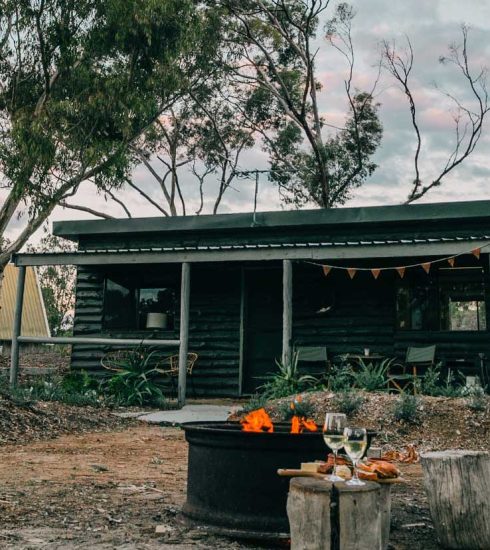Choosing the Right Playground Surfacing: Safety, Durability and Fun
When it comes to creating a safe and enjoyable playground environment, selecting the right surfacing material is of utmost importance. Playground surfaces play a pivotal role in ensuring the safety, durability, and fun of the space. In this article, we’ll delve into the key considerations for choosing the right playground surfacing that balances safety, longevity, and excitement for young adventurers.
Introduction
Playgrounds are more than just spaces for children to have fun; they are essential for their growth and development. The foundation of a great playground lies in the choice of surfacing material. As parents, caregivers, and community planners, understanding the significance of selecting the right playground surfacing material is paramount.
The Significance of Playground Surfacing
Playground surfacing is the layer of material placed beneath play structures to minimize the impact of falls, providing a safe environment for children to play. The right surfacing material cushions falls and reduces the risk of injuries, offering parents peace of mind while children explore their surroundings.
Safety First: Impact Absorption and Fall Protection
Children are prone to falls and tumbles while playing, making impact absorption a critical factor. A high-quality playground surface absorbs shock and cushions falls, reducing the risk of serious injuries. Ensuring proper fall protection helps create a safe haven where kids can be adventurous without unnecessary risks.
Durability: Withstanding the Test of Time and Elements
Durability is another key aspect when selecting playground surfacing. The material must withstand the constant foot traffic, changing weather conditions, and potential vandalism. Opting for a durable material not only ensures the safety of children but also minimizes maintenance and replacement costs.
Types of Playground Surfacing Materials
Engineered Wood Fiber
Engineered wood fiber is a popular choice for playground surfacing due to its natural appearance and excellent impact absorption. It is made from wood chips and fibers, creating a soft surface that effectively cushions falls.
Rubber Mulch
Rubber mulch, made from recycled tires, is gaining popularity for its eco-friendliness and durability. It offers a soft surface that effectively absorbs impact, making it a safe choice for play areas.
Poured-in-Place Rubber
Poured-in-place rubber is a seamless surfacing option that provides a cushioned and accessible surface. It comes in various colors and designs, adding an element of creativity to the playground.
Artificial Grass
Artificial grass is known for its low maintenance requirements and consistent play surface. While it may not provide the same level of impact absorption as other materials, it offers a lush and visually appealing environment.
Interlocking Tiles
Interlocking tiles are versatile and easy to install. They come in various materials, including rubber and PVC, offering different levels of impact absorption and durability.
Factors to Consider When Choosing Playground Surfacing
Budget Constraints
Determining a budget is crucial before selecting a playground surfacing material. While safety is paramount, finding a balance between cost and quality is essential.
Climate Considerations
The local climate greatly affects the choice of surfacing material. Materials that can withstand extreme temperatures, heavy rainfall, or intense sunlight are preferable for long-term durability.
Maintenance Requirements
Different materials have varying maintenance needs. Some require regular raking or replenishing, while others need occasional cleaning. Understanding the maintenance demands helps in making an informed decision.
Accessibility for All
Incorporating accessibility features ensures that children of all abilities can enjoy the playground. Some surfacing materials are better suited for wheelchair access and ease of movement.
Striking the Balance: Safety and Fun
Choosing the right playground surfacing strikes a delicate balance between safety and fun. While safety is paramount, the chosen material should also contribute to an enjoyable play experience.
Installation and Maintenance Guidelines
Proper installation and maintenance are crucial for the longevity and safety of the playground. Following manufacturer guidelines and performing routine inspections are essential to uphold the quality of the surfacing.
Comparing Long-Term Costs: Making Informed Decisions
While initial costs are important, it’s equally vital to consider long-term expenses. Some materials may have higher upfront costs but prove cost-effective in the long run due to lower maintenance and replacement needs.
Expert Insights: Professionals Weigh In
Consulting with playground designers, safety experts, and landscape architects can provide valuable insights into choosing the right surfacing material. Their expertise ensures a well-informed decision.
Playground Surfacing DIY: Is It a Feasible Option?
Some may consider DIY playground surfacing installations to save costs. However, it’s essential to weigh the pros and cons, considering factors such as expertise, safety standards, and long-term durability.
User Reviews and Testimonials
Reading reviews and testimonials from other playground owners can offer real-world insights into the performance of different surfacing materials. Their experiences can help guide your decision.
Incorporating Creativity: Colors and Designs
Playground surfacing materials come in various colors and designs. Choosing vibrant and creative options not only adds aesthetic appeal but also enhances the overall play experience.
Conclusion
Selecting the right playground surfacing material is a crucial decision that impacts the safety, durability, and enjoyment of children’s play spaces. By considering factors such as safety, durability, budget, and accessibility, you can create a playground that fosters both fun and security for young adventurers.
FAQs
- Can I install playground surfacing materials myself?
While it’s possible, professional installation is recommended for safety and longevity. - Which playground surfacing material offers the best impact absorption?
Poured-in-place rubber and engineered wood fiber are known for their excellent impact absorption properties. - What’s the most durable playground surfacing option for high-traffic areas?
Rubber mulch and poured-in-place rubber are durable choices suitable for areas with heavy foot traffic. - Are there eco-friendly playground surfacing options available?
Yes, rubber mulch and some types of poured-in-place rubber are made from recycled materials. - How often should I inspect and maintain playground surfacing?
Regular inspection and maintenance are essential to address any wear, tear, or damage promptly and ensure the continued safety of the playground.
————————






